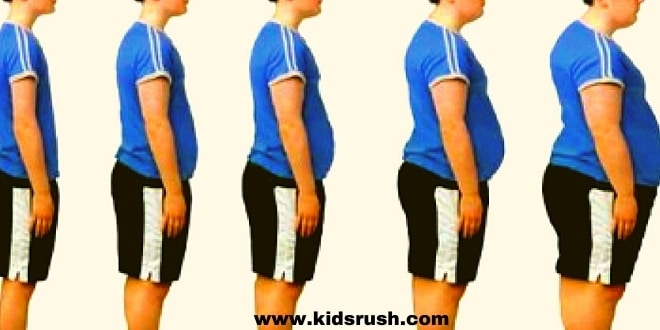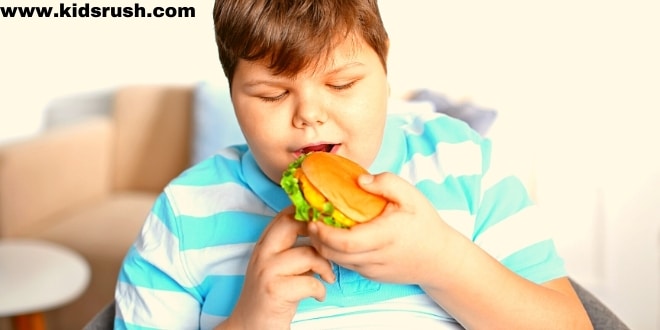Diet Guidelines and Menu for Overweight Children:
The World Health Organization (WHO) states with concern that childhood obesity and overweight is one of the most serious problems of the 21st century. In the United States, the number of minors with this problem increases every year, and it is currently estimated that 18.5% of the United States children are overweight. [1] The only way to combat it is through exercise and a healthy diet, so in this post, we want to give you specific recommendations and advice on food and menus for overweight children.
Diet guidelines for overweight children
Accept reality and get to work

Weight problems in childhood are associated with various health problems and complications, both in childhood and in adulthood, that is why it is important to detect it and assume the reality of the child.
The causes behind childhood overweight are clear; sedentary life and bad eating habits, so that the day today, the child’s routines and family dynamics are closely related to excess weight.
If your child is overweight, you should reflect on family habits and be willing to improve them for the good of your little one and that of the whole family. From Club Familias, we invite you to make this reflection without feeling guilty, because you have been doing the best you can, and sometimes you may have lacked time or information to do things differently.
At this point, the important thing is to know how to detect the problem and its origin, and to get all the help and information necessary to take the step towards healthy habits that change the lives of all family members for the better, and forever.
Feeding guidelines

With the changes in the diet, the aim is to adjust the energy and the nutrients to the real needs of the little one and correct those errors that cause their weight to be higher than that which corresponds to their height and age.
If you want your child to lose weight, try making the following modifications to the family’s diet and habits:
Do not skip breakfast, as many children do not eat breakfast and directly eat an unhealthy snack mid-morning. To properly distribute energy, at breakfast and mid-morning snack, at least 25% of the total daily energy should be ingested.
We recommend you to read another article from kidsrush.com which is about 8 Foods for growing children well.
Breakfast should always include some dairy, fruit, and cereals.
To avoid overeating in any of the daily meals, it is recommended to take at least 4 intakes, distributing energy as follows: 25% at breakfast and lunch, 30-35% at food, 15% at snack, and the rest at dinner.
One of the most common mistakes in children’s diets is to include too much meat and derivatives, instead of offering more fish and legumes. It is advisable to reverse this trend by including more dishes that contain these foods. Ideally, 2-3 times a week.
When consuming meats, opt for lean meats, removing all visible fat, and not consuming it more than 2-3 times a week.
We recommend you to read on kidsrush.com article How to make light dinners for children.
The intake of vegetables, greens, and fruit is usually low when these foods should make up half of each dish, leaving only 25% for carbohydrates, and the other 25% for protein. This is indicated by the distribution of the healthy eating plate developed by Harvard University.
Try healthier foods like roasting, baking, or steaming. And avoid fried, breaded and battered ones as much as possible, or limit your intake to specific occasions.
Reduce the consumption of artificial sauces and dressings such as ketchup and rediscover the power of the most natural dressings based on extra virgin olive oil (EVOO) and spices.
Adjust the portions to the age and needs of each member of the family and serve in the kitchen, not at the table, to avoid repeating and eating more than the recommended amount. Don’t forget to make mealtime enjoyable for your children because don’t let them be bored in any way.
Sample menu for overweight children

When a child is overweight or obese, in addition to the changes and recommendations that we have detailed in the previous point, and whenever the pediatrician considers it necessary, a hypocaloric diet can be carried out. Always try to make some healthy meals for your children.
We recommend you to read another article from kidsrush.com which is about The best vegetables for kids.
Diets must be personalized, and adjust to the needs of each child, their physical characteristics, and the level of overweight from which they start, but below, we give you an example of a menu that can serve as a reference, and, always keeping in mind that You must compose the plate with the indications of the plate to eat healthy for Harvard children :
| Day | BREAKFAST | Lunch | SNACK | Dinner |
|---|---|---|---|---|
| Monday | Yogurt with muesli | Potatoes stewed with meat. | Milk | Slice of pork tenderloin with baked vegetables. |
| Hake fillet with peas. | Whole wheat toast with spreadable cheese and light jam. | Yogurt | ||
| fruit | ||||
| Tuesday | Milk | Lentils with vegetables. | A handful of nuts. | Swordfish fillet with mashed potatoes. |
| Whole wheat toast with spreadable cheese and light jam. | Spinach Tortilla. | Yogurt | Gelatin with fruitsÿ. | |
| Yogurt. | ||||
| Wednesday | Milk | Macaroni with tomato sauce and cheese. | Homemade oatmeal cookies. | Zucchini omelette. |
| Whole wheat toast with oil and tomato. | Veal meatballs with garden sauce. | Natural orange juice. | Tomato salad with small pieces of soft cheese. | |
| Jelly Fruits | fruit | |||
| Thursday | Orange juice with whole grain rusks and spreadable cheese. | Vegetable puree with croutons. | fruit | Hake fillet with grilled vegetables gratin with cheese and tomato sauce. |
| Saxon steak and baked potatoes. | Strawberries or kiwi with 1 tablespoon of spreadable cheese. | |||
| fruit | ||||
| Friday | Yogurt with fruits. | Zucchini and carrot cream. | 1 whole wheat toast with spreadable cheese and avocado. | York ham tart with soft cheese. |
| Loin tape with tomato. | Yogurt | |||
| Roasted apple with cinnamon. | ||||
| Saturday | Milk with dried fruit cereals. | Stewed white beans. | fruit | Salmon with roasted potatoes. |
| Carrot salad with corn and pieces of chopped York ham. | Fruit salad | |||
| Yogurt | ||||
| Sunday | Roasted apples with cinnamon. | Chicken paella | Homemade oatmeal cookies. | Chicken with vegetables. |
| Orange juice. | Fruit salad. | Natural orange juice. | Jelly With Fruits. |
The importance of an active life

Eating a low-calorie diet can help you lose weight, but to achieve a healthy weight, you need to combine it with an active life and exercise.
If your child is not used to moving, encourage him and offer him to carry out activities that interest him, so that he does not perceive this need to practice sports as an obligation, but rather that it is something that he does with desire and without involving too much effort, since, in such a case, the chances of quitting and failing are very high.
In addition to several weekly sports sessions, you must plan family activities that involve movement, such as going skating or hiking in the mountains on the weekend.
If your kid spends a lot of time in front of the screens, try to negotiate and agree on the times to reduce them. To alternate this sedentary habit with others that require leaving the house, socializing, and moving, such as accompanying you to the purchase or taking a walk by bike around the neighborhood.
Along with food and exercise, motivation is the most important thing for your child to return to a healthy weight. Maintain these good habits throughout his life, and prevent overweight. We hope these diet tips and our menu for overweight children help you start this big change.
